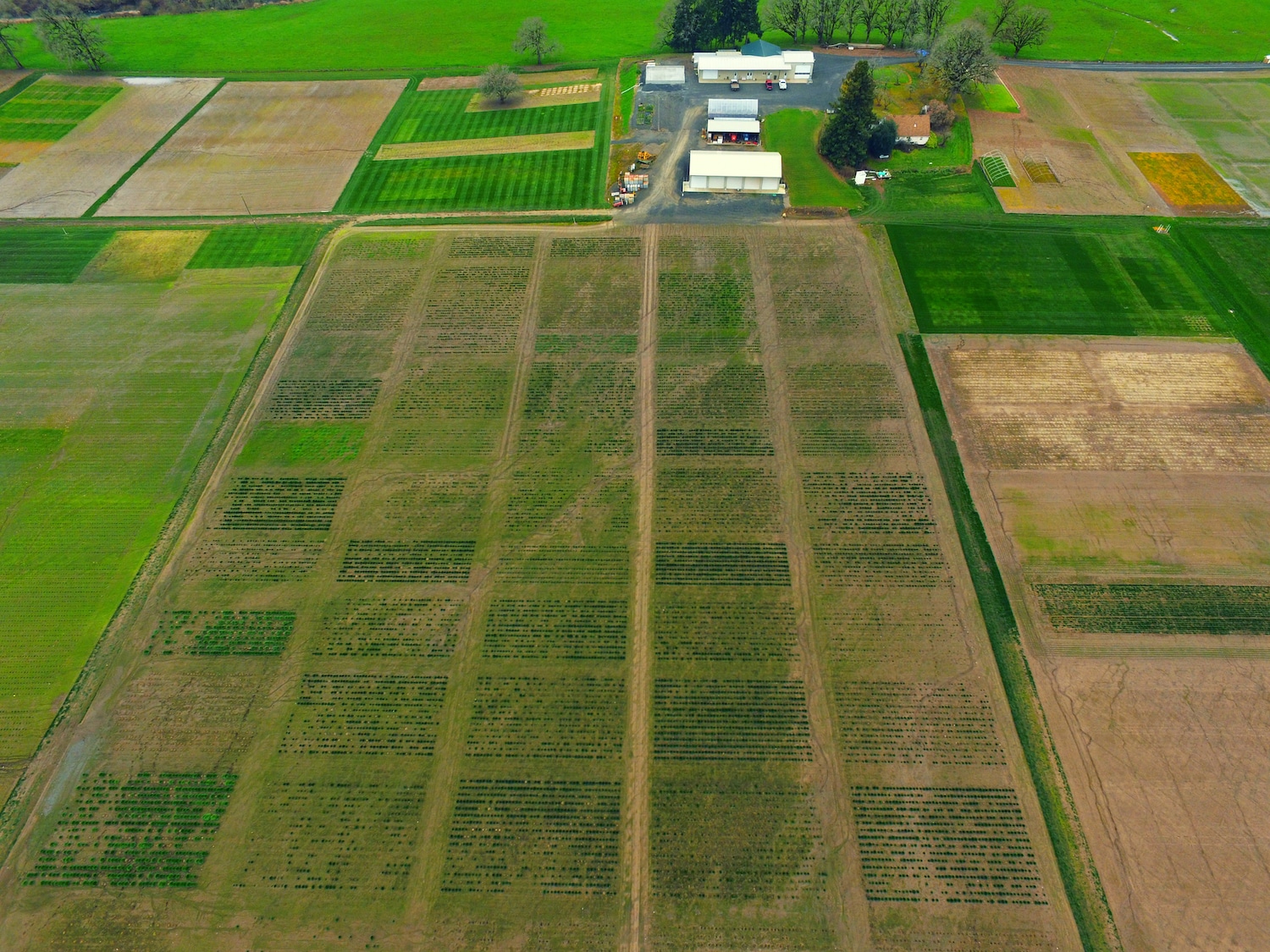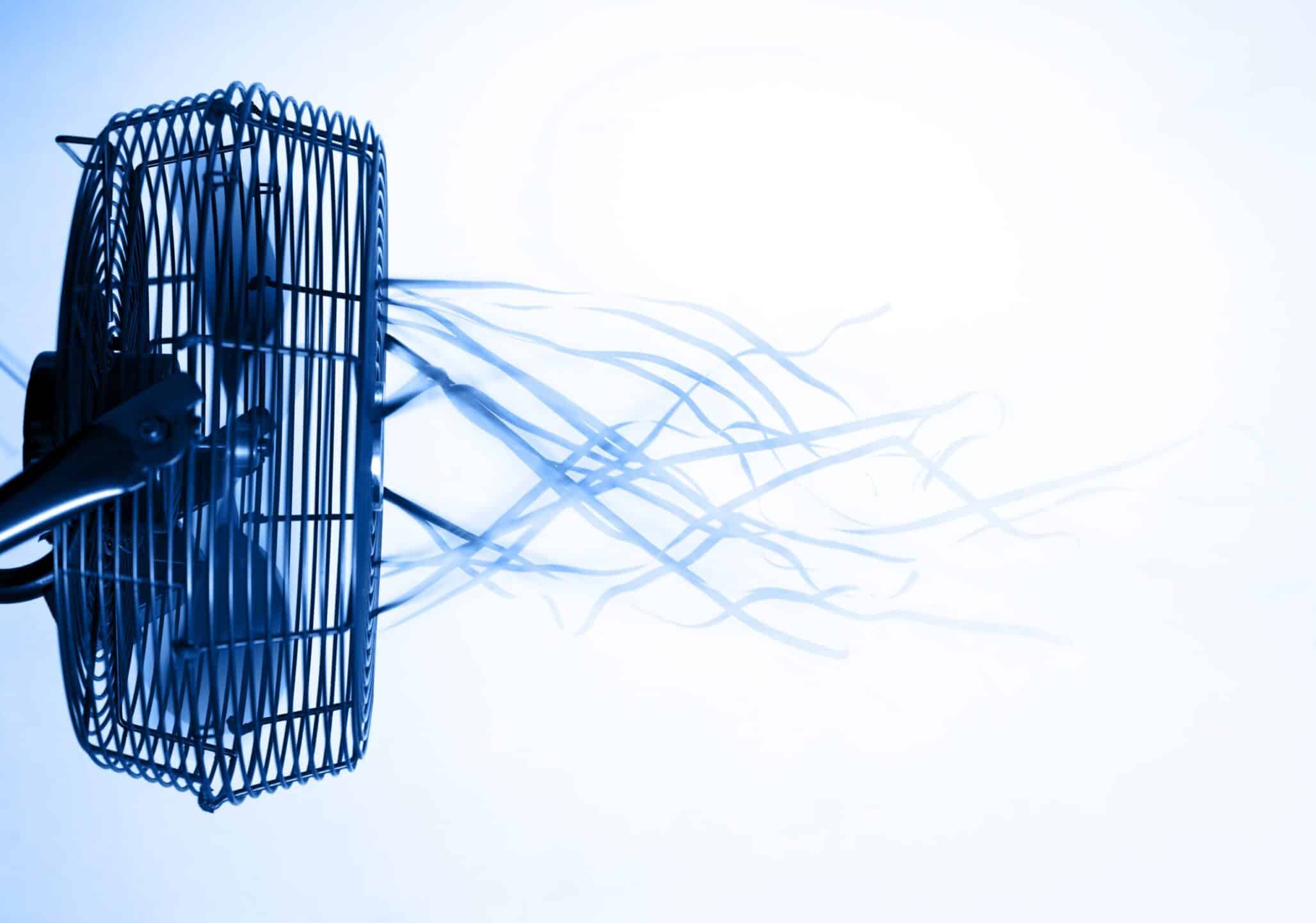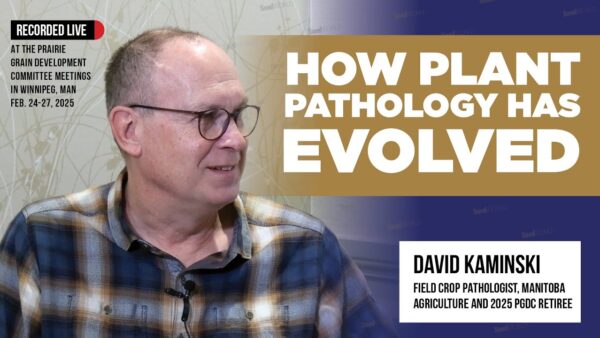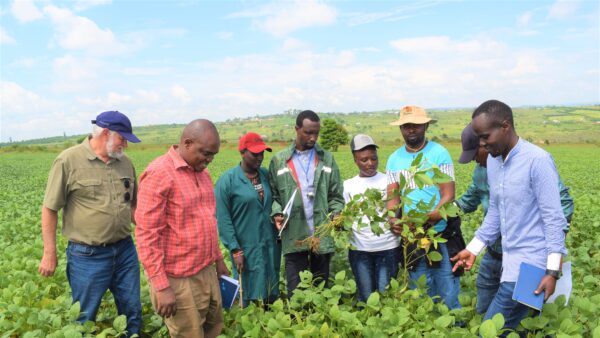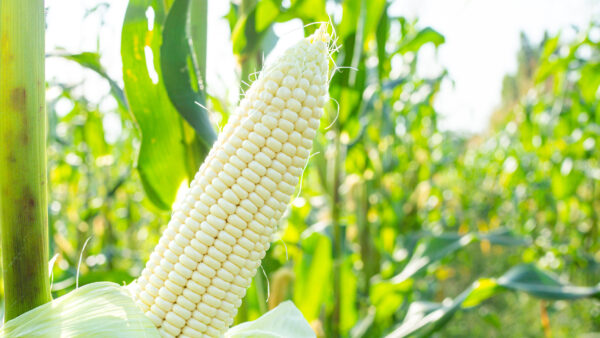From a hillside in Kentucky to a research lab at the Noble Research Institute, the future of fescue is still being written to provide a resilient grazing solution for marginal pasture acres.
A hardy plant discovered on a steep Kentucky hillside in 1931 has made its mark on the United States, both as a turf and forage option, covering more acres than any other grass.
Today, there are 35 million reported acres of tall fescue growing in the United States.
“Since the 50s, demand for tall fescue has increased tremendously,” says Craig Roberts, professor of Plant Sciences and state forage specialist at Penn State. “We are at 35 million acres in the United States and we have seven million acres of tall fescue in Missouri pastures alone. But we have at least that much planted on roadsides, on sports turf, in lawns and invading native grasslands.”
From humble beginnings, the history and present day application of the persistent perennial that covers so many acres is an interesting one, rich in science and innovation.
Getting Started
Although tall fescue has been in the U.S. since the 1800s, it wasn’t until 1931 that University of Kentucky professor E.N. Fergus learned of the resilient grass growing on the Suiter farm in Menifee County, Kentucky, and saw the benefits such a species could provide.
As shared by the University of Kentucky, Fergus observed the erosion and grazing qualities of the grass, noting that even in the winter months, the grass was still green. The professor obtained seed from the field and planted it on the University of Kentucky Experiment Station farm in 1932, naming it Kentucky 31 (K31) after the year it was discovered.
By 1942, the first K31 seed was released commercially, and throughout the following decade, large numbers of acres were seeded in hopes of controlling erosion and creating a more hardy forage source. Farmers, ranchers and even the lawn-care industry recognized the drought tolerance and hardiness of the grass to withstand different environmental and livestock imposed pressures.
K31 is still popular today and can be found and as pastures from coast to coast in the United States, where temperatures fluctuate greatly from summer to winter.
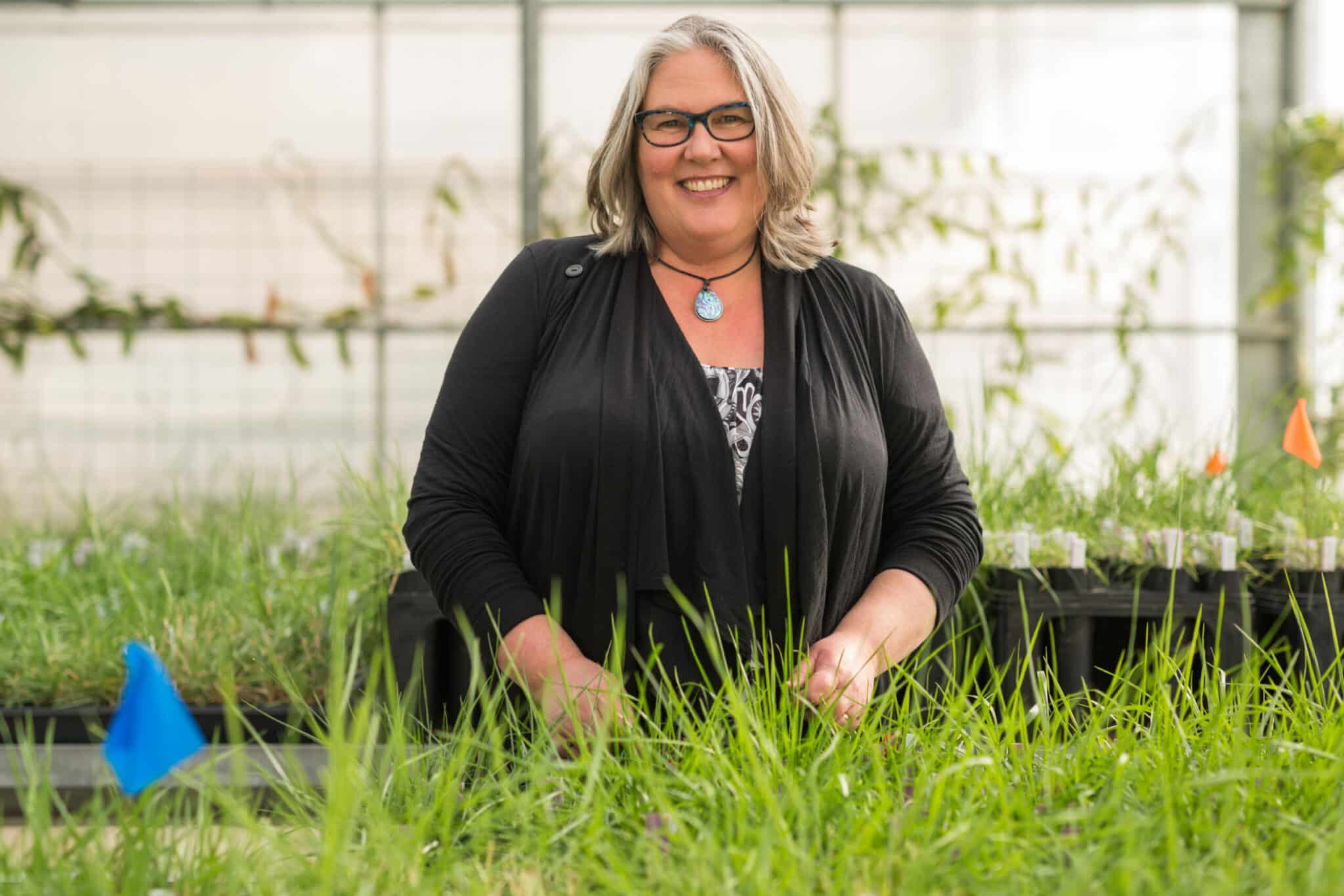
Roberts shares that for agronomists, K31 fills two vital roles: it is both persistent and has a long growing season and it is very good for agronomy because of the soil stabilization it provides.
“I served on a statewide committee after the 1993 flood. The question that was trying to be answered was, ‘What do we plant on these saturated, broken levees after they are repaired?'” Roberts says. “There were several different options but, in the end, the committee came back with tall fescue, because it is so tough. We knew that it would hold the soil in place, year after year, through droughts, freezing and thawing, insect infestation.”
K31 can survive both categories of stressors, abiotic and biotic, making it a popular choice amongst livestock producers and the turf industry.
Not the Perfect Forage
While tall fescue is still the most widely used forage crop within its namesake, the “Fescue Belt,” it does have a significant downside for livestock producers.
Most of the tall fescue throughout the Fescue Belt is infected with a fungal endophyte that produces compounds (ergot alkaloids) that are toxic to grazing animals. Acting as a defense mechanism for the plant, the endophytes prevent overgrazing and allow the grass to persist, even in harsh conditions.
Only a few years after vast acreages were sewn to K31, reports of poor animal performance, and in some instances, animal death, began to surface. Through extensive research, tall fescue was found to have a fungus inside the plant that grows between the plant cells, the fungus was named endophyte.
According to Roberts, K31 can create a host of problems for grazing animals, including low daily gains, poor conception and offspring survival rates, and restricted blood flow to the extremities, causing a condition known as “fescue foot”.
“K31 endophyte infected fescue costs United States livestock producers over $1 billion a year,” Roberts says. “That’s why it’s such a controversial plant. Toxicosis caused by endophyte infected tall fescue is the greatest management cost those grazing livestock in the Fescue Belt have.”
Losses caused by toxicosis are all too familiar to Burgaw, North Carolina, cattle producer Buron Lanier.
“The majority of the pastures that we started out with when we got into cattle were K31,” says Lanier. “We noticed that our cows never thrived on those pastures like we thought they would. We had trouble with conception and growth, and some of the cows started to lose their tail switches. Once we started investigating we found out that we had toxicosis problems.”
The knowledge Lanier gained from his research led him to convert all 400 of the acres the operation utilizes for year-round cattle grazing to novel endophyte infected tall fescue varieties.
A Novel Improvement
To combat fescue toxicosis, the industry first removed the endophyte all together.
“When it was first discovered that problems were caused by the endophyte in the plant, the first thought was that we should just remove it,” says Carolyn Young, a scientist Noble Research Institute, who researches endophytes and other microorganisms and their contribution to plant production. “It was very quickly seen that the endophyte provided many things to the plant that were also beneficial, as we see better persistence, drought tolerance and greater seed production in the endophyte-infected plants.”
Today, a major breakthrough in forage and cropping systems has been the introduction of novel endophyte infected tall fescue varieties, providing both the benefit of the endophyte while omitting the ergot alkaloid biosynthesis that is toxic to the animals that graze the plant.
Novel endophyte infected fescue was first introduced in 2000 with seed companies patenting specific endophytes to create unique tall fescue varieties.
“Novel endophytes are proprietary products,” says Roeland Kapsenberg, vice president, Agriculture Division, for DLF Pickseed.
“Our first variety with a novel endophyte was obtained through a licensing agreement from the University of Arkansas. Separately, we started our own collection and selection to identify beneficial endophytes,” he says. “Through this process we have identified an endophyte that is compatible to a broad range of tall fescue germplasm. That has allowed us to develop several tall fescue varieties with the same ‘novel endophyte’.”
Kapsenberg says that while beneficial endophytes may be easily identified, that is only a fraction of the challenge in crea-ting a novel endophyte fescue variety for the marketplace. If the endophyte is not compatible with the germplasm, low infection rates will occur and the resulting seeds will be endophyte free rather than novel endophyte infected.
“We already know from previous studies that endophyte-free lines don’t persist well so it is imperative within the development of a new cultivar that it is highly endophyte infected,” he says.
Creating a Silver Bullet Solution
Roberts says that novel endophytes are a silver bullet for the livestock industry and the research and cultivar improvement coming out the Noble Research Institute, universities and seed companies are producing an affordable and long-term solution for producers and farmers.
Carolyn Young and Mike Trammell work together at the Noble Research Institute to create tall fescue cultivars for the seed industry that have both livestock and ecological benefits.
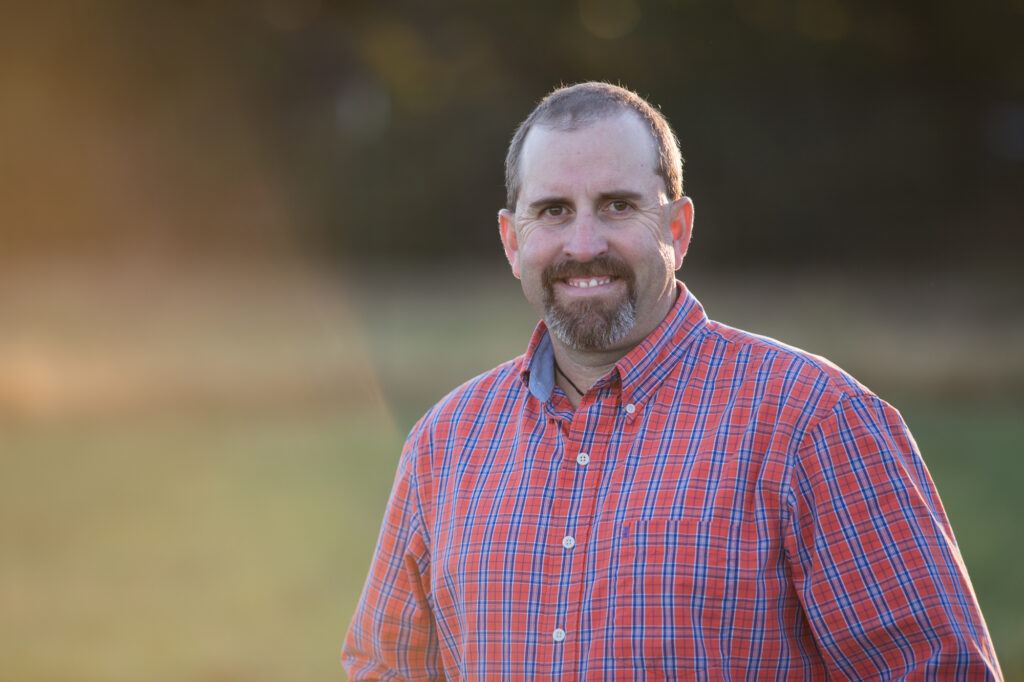
Trammell says that he and Young work closely in the creation of novel endophyte infected seed for Noble’s breeding program.
“Carolyn takes out the toxic endophyte and replaces it with a novel endophyte,” Trammell shares. “Then she helps me monitor for the endophyte during the breeding process to ensure that the novel endophyte stays with the plant and transfers from generation to generation.”
Young says that when selecting a novel endophyte, the first thing you have to do is understand that different endophyte strains vary and learning those variations is one of the main drivers for the genome sequencing the Noble Research Institute is doing on many different endophytes.
“Making sure that we know what makes one strain toxic and other strains non-toxic is the first step when we look at the endophytes. And it comes down to knowing how these isolates came about ‚Äì what is in their genomes ‚Äì and identifying the genes that are required for alkaloid biosynthesis,” says Young.
Young has been looking at the genes for ergot alkaloid biosynthesis and has noted that in the novel endophyte strains she and Trammell are working with, those genes aren’t present in the genome, meaning that the fungus is unable to produce the toxic alkaloids. Currently, all endophytes used for novel endophyte infected tall fescue are from the same species, Epichloe coenophiala.
“Today, we can do entire genome sequencing for any given isolate, but when endophytes were first identified, the only way we could determine variation between isolates was initially testing for ergot alkaloid production or determining variation associated with a few available simple sequence repeat regions,” says Young.
Adoption and Education
Although novel endophyte infected fescue varieties provide both ecological benefits to a pasture while maintaining grazing free from toxicosis, many producers are slow to adopt.
Roberts estimates that over 85% of the tall fescue in pastures throughout the Fescue Belt are still K31, and those producers are using other inputs to off-set the effects of toxicosis.
“We have seen a 50% jump in novel endophyte infected seed sales, but that is relative because sales have been so low,” says Roberts.
The biggest hurdle, all sources agree, is education and knowledge dissemination; hurdles the Alliance for Grassland Renewal are working to clear.
Now in its seventh year, the Alliance brings the seed industry, university and government together in one-day workshops held throughout the Fescue Belt.
The workshops cover everything from the economic benefit of renovating pastures to the proper calibration of a no-till drill – a required tool in the renovation techniques the Alliance teaches.
Roberts shares that when the curriculum and messaging were being built, all who were involved had one clear goal: Renovate to get rid of the toxicosis that costs producers so much each year. A feat the group is accomplishing, albeit slower than they would like.
For Lanier, the cost of renovating was small in comparison to the cost of toxicosis.
“Cost is a misnomer; K31 is what is expensive on a farm, you just don’t see all of the losses up front,” Lanier says.


